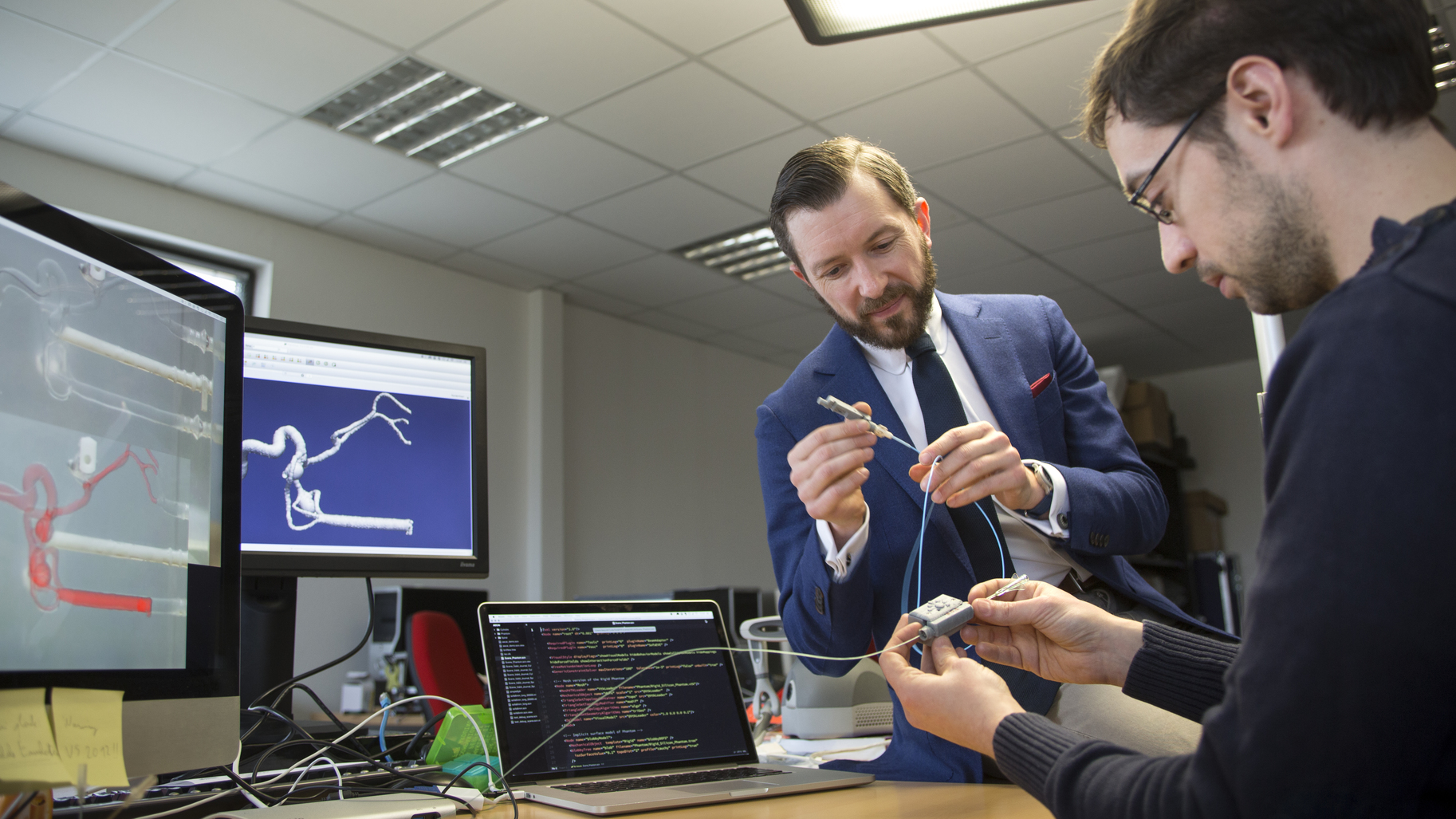
Covid-19: an exoskeleton for helping healthcare workers to turn patients
At the surge of the Covid-19 epidemic, doctors at Nancy University Hospital asked researchers of the Larsen project team if they had a solution that could help them to help turning patients in artificial comas in prone or supine position. It can take up to six healthcare workers to do this for patients who are intubated and on life support, especially when obesity is a frequent comorbidity. Acting swiftly, Inria, in collaboration with the CNRS and INRS (Institut national de recherche et de sécurité, organisme en santé et sécurité au travail - the French National Research Institute for Health and Security at work), selected four types of exoskeletons and carried out a pilot study on a Covid-19 patient simulator at the Lorraine Virtual Hospital (HLV). A week later, staff were able to start using the selected device, significantly reducing their physical efforts and back pain.
From robotic arms to catheters: the art of soft control
Interventional cardiologists use real-time x-ray visualisation to guide catheters into arteries and towards the heart. Robocath, a company which specialises in this field, is seeking to automate part of this task, which requires precision control over the catheter, which is flexible and compliant. They called upon Defrost and Scool, two Inria project teams which specialise in simulation for controlling flexible, compliant robotic arms for use in precision tasks. The collaboration is part of a CIFRE PhD that will come to an end in late 2021.
Robocath came to Inria seeking expertise in physics simulations, controlling flexible catheters, and learning techniques for decision support. This project is helping us to prepare for the future, employing technology that is already used in a number of other fields and which, in the coming years, is bound to be used in applications such as medical robotics.
Bruno Fournier, R&D director for Robocath.
Guiding flexible needles through human tissue
For biopsies, for treating tumours and for draining, surgeons insert flexible needles - which can be as long as 20 cm - into tissue, with ultrasound images to direct them. The Inria project team Rainbow is developing a robot assistance system that combines models of the interaction between the needle and the tissue and changes in the needle's shape, ultrasound image analysis and control algorithms enabling the needle to be moved in six degrees of freedom in order to precisely control the position of the point. The objective is to help surgeons get it right at the first attempt.
The benefits of rhythm therapy for children with autism
Picture a child with autism who has motor issues, and a small, humanoid robot across from him, moving its arm, getting the child to imitate the movements, and observing and adjusting its own rhythm. In order to make this a reality, the Inria project team Larsen and the 2LPN (The University of Lorraine) reprogrammed Pepper, a companion robot, improving its synchronisation and perception capacities. The initial tests, which were validated by an ethics committee and carried out on around twenty children, were highly promising. Studies have previously shown that rhythm therapy can improve the outlook for children with autism.
Bringing people without electric wheelchairs out of isolation
In France, 200,000 people who need an electric wheelchair to get about don’t have access to one. The issues they suffer from, whether cognitive, neurological or visual, make this too dangerous. In order to tackle this situation, which can lead to isolation, the Inria project team Rainbow has been equipping wheelchairs with driving assistance kits, complete with infrared sensors. These kits gently correct any incorrect trajectories as patients attempt to pass through doors, enter lifts or go past other people. The next step will involve helping them to avoid steps and pavement edges.